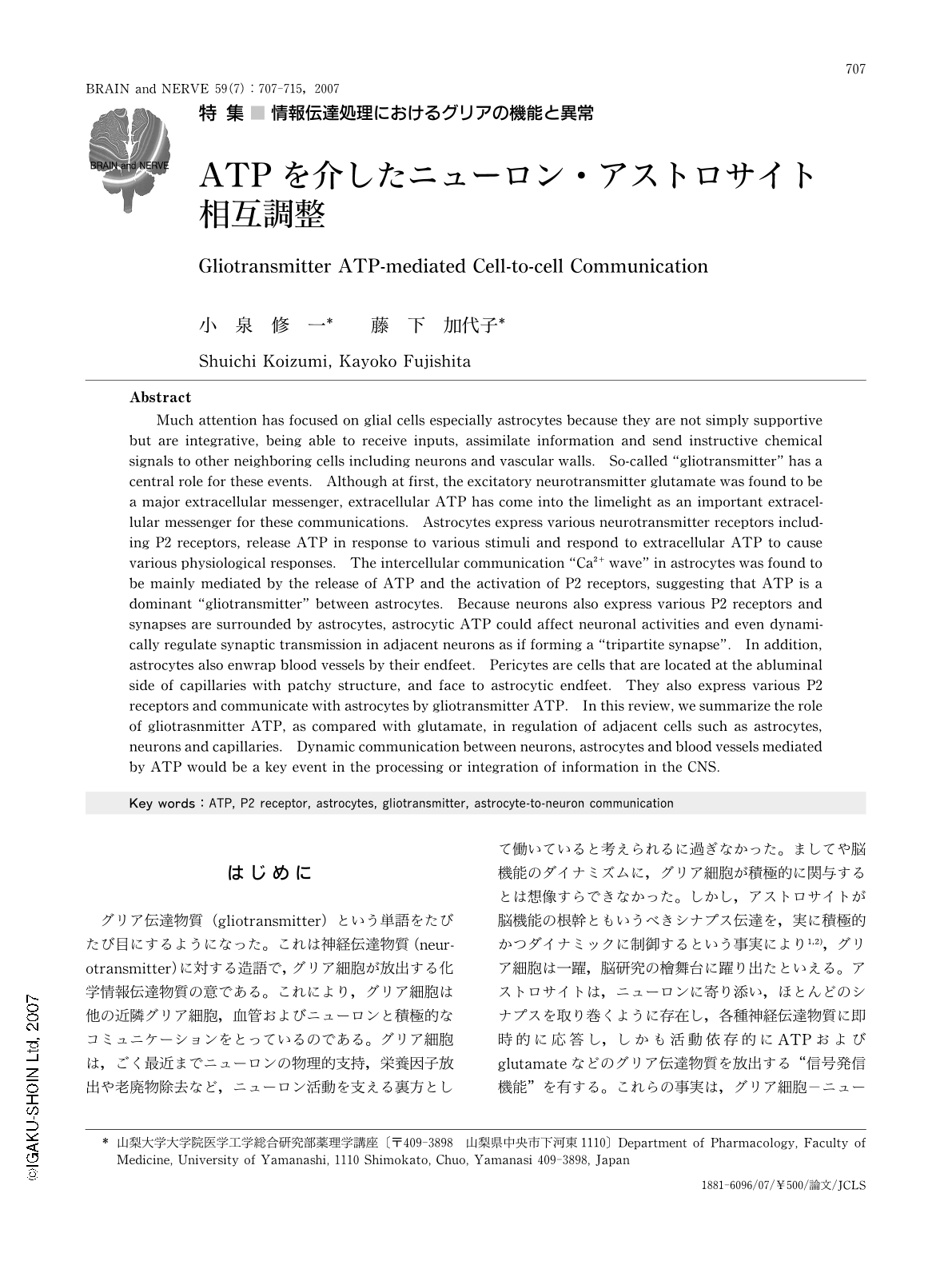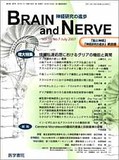Japanese
English
- 有料閲覧
- Abstract 文献概要
- 1ページ目 Look Inside
- 参考文献 Reference
はじめに
グリア伝達物質(gliotransmitter)という単語をたびたび目にするようになった。これは神経伝達物質(neurotransmitter)に対する造語で,グリア細胞が放出する化学情報伝達物質の意である。これにより,グリア細胞は他の近隣グリア細胞,血管およびニューロンと積極的なコミュニケーションをとっているのである。グリア細胞は,ごく最近までニューロンの物理的支持,栄養因子放出や老廃物除去など,ニューロン活動を支える裏方として働いていると考えられるに過ぎなかった。ましてや脳機能のダイナミズムに,グリア細胞が積極的に関与するとは想像すらできなかった。しかし,アストロサイトが脳機能の根幹ともいうべきシナプス伝達を,実に積極的かつダイナミックに制御するという事実により1,2),グリア細胞は一躍,脳研究の檜舞台に躍り出たといえる。アストロサイトは,ニューロンに寄り添い,ほとんどのシナプスを取り巻くように存在し,各種神経伝達物質に即時的に応答し,しかも活動依存的にATPおよびglutamateなどのグリア伝達物質を放出する“信号発信機能”を有する。これらの事実は,グリア細胞-ニューロン間の積極的なコミュニケーションが,情報処理・発信を形成していることを推測させる。さらに,アストロサイトはそのendfeetで血管を包み込み,毛細血管外腔側に位置する血管周皮細胞とも,グリア伝達物質により積極的にコミュニケーションをとる。本稿では,ATPを切り口として,アストロサイト-ニューロン間,さらにアストロサイト-脳血管コミュニケーションの生理学的および薬理学的性質を示し,“静なる巨人”グリア細胞の脳機能制御における動的な側面,およびその重要性に関する最新の知見を述べる。
Abstract
Much attention has focused on glial cells especially astrocytes because they are not simply supportive but are integrative, being able to receive inputs, assimilate information and send instructive chemical signals to other neighboring cells including neurons and vascular walls. So-called “gliotransmitter” has a central role for these events. Although at first, the excitatory neurotransmitter glutamate was found to be a major extracellular messenger, extracellular ATP has come into the limelight as an important extracellular messenger for these communications. Astrocytes express various neurotransmitter receptors including P2 receptors, release ATP in response to various stimuli and respond to extracellular ATP to cause various physiological responses. The intercellular communication “Ca2+ wave” in astrocytes was found to be mainly mediated by the release of ATP and the activation of P2 receptors, suggesting that ATP is a dominant “gliotransmitter” between astrocytes. Because neurons also express various P2 receptors and synapses are surrounded by astrocytes, astrocytic ATP could affect neuronal activities and even dynamically regulate synaptic transmission in adjacent neurons as if forming a “tripartite synapse”. In addition, astrocytes also enwrap blood vessels by their endfeet. Pericytes are cells that are located at the abluminal side of capillaries with patchy structure, and face to astrocytic endfeet. They also express various P2 receptors and communicate with astrocytes by gliotransmitter ATP. In this review, we summarize the role of gliotrasnmitter ATP, as compared with glutamate, in regulation of adjacent cells such as astrocytes, neurons and capillaries. Dynamic communication between neurons, astrocytes and blood vessels mediated by ATP would be a key event in the processing or integration of information in the CNS.

Copyright © 2007, Igaku-Shoin Ltd. All rights reserved.


